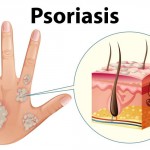Rabies
Rabies is a serious viral infection that targets the brain and nervous system . The disease is zoonotic i.e. it can be transmitted from one species to another, such as from dogs to humans, commonly due to a bite from an infected animal. For a human, rabies is almost invariably fatal if post exposure prophylaxis is not administered prior to the onset of severe symptoms. The rabies virus infects the central nervous system, ultimately causing disease in the brain and death. The rabies virus travels to the brain by following the peripheral nerves. The incubation period of the disease is usually a few months in humans, depending on the distance the virus must travel to reach the central nervous system.
Symptoms
The period between infection and the first flu-like symptoms is typically 2 to 12 weeks. Symptoms usually include:
Slight or partial paralysis
Anxiety
Insomnia
Confusion
Agitation
Abnormal behavior
Terror
Hallucinations progressing to delirium.
Causes
The rabies virus belongs to a group of viruses called lyssaviruses, which can infect mammals. Rabies can spread to humans from infected animals through a bite, a scratch, or a lick to broken skin or the eye.
How rabies spread?
Once rabies virus enters the body, it multiplies before spreading into nerve endings. It then travels to the spinal cord and brain (the central nervous system). Once the virus is in the central nervous system, it will spread to the salivary glands, lungs, kidneys and other organs. While in theory it is possible for rabies to spread between humans, this has so far only happened as a result of infected donated organs.
Diagnosis
Tests used to confirm a diagnosis of rabies in its more advanced stages include:
Skin biopsy – A small sample of skin is removed and checked for the presence of the rabies virus.
Saliva test – A sample of saliva is tested for the presence of the rabies virus.
Lumbar puncture – A needle is used to remove a small sample of cerebrospinal fluid (CSF), which can be checked for the rabies antibodies (CSF is the fluid that surrounds your brain and spinal cord).
Blood tests – Blood is checked for the rabies antibodies
Treatments
Treatment depends upon whether the patient has started to show any signs and symptoms.
Vaccination after exposure is highly successful in preventing the disease if administered promptly within 10 days of infection. It includes:
Cleaning the wound
Administering rabies immunoglobulin – a special preparation of antibodies
A course of the rabies vaccine
Preventions
A vaccination that offers protection against rabies is recommended for people who are at risk. The rabies vaccine is available as: Human diploid cell vaccine (HDCV), Purified chick embryo cell vaccine (PCECV).
The schedule for Rabies vaccine is as follows:
The first dose may be given at any time after the dog bite.
The second dose should be given seven days later.
The third dose should be given 21 or 28 days after the first dose.
Booster doses of vaccine are recommended every two years for those individuals who continue to be at increased risk of contracting rabies to maintain protective antibody levels.
References:
CDC
WHO
NHS








